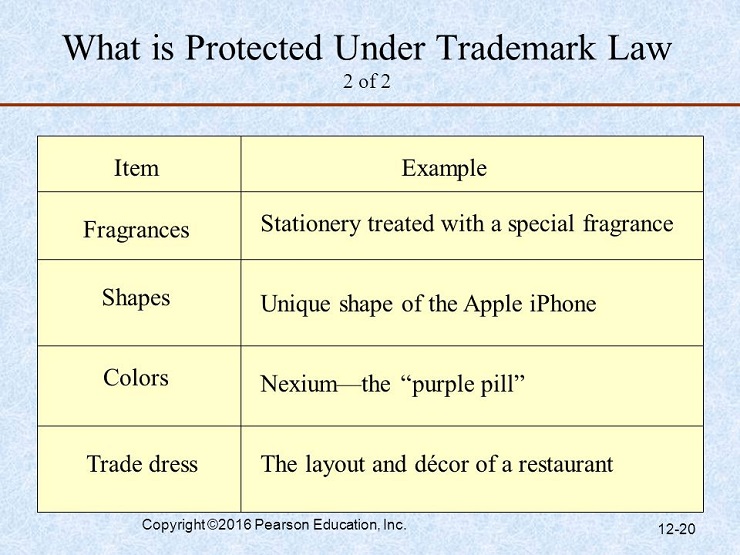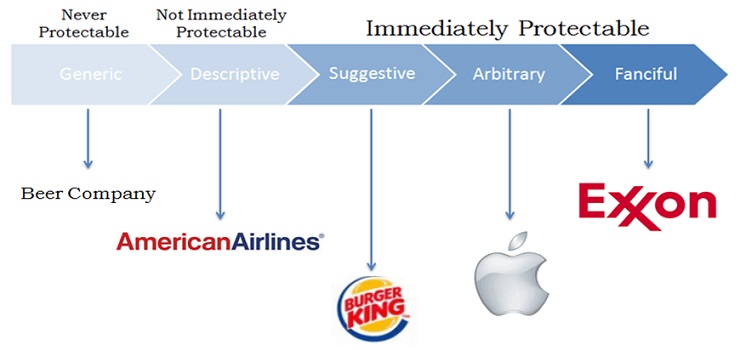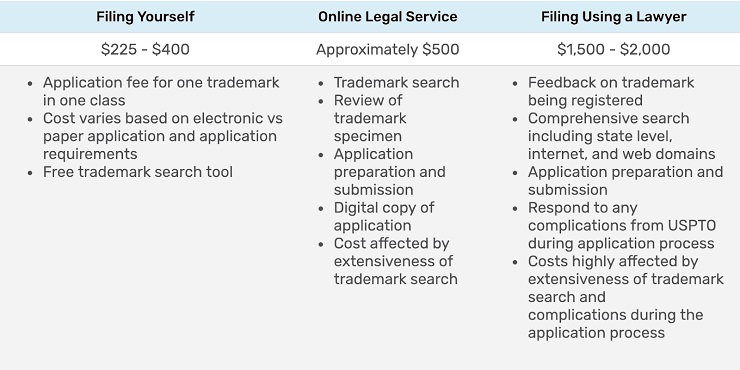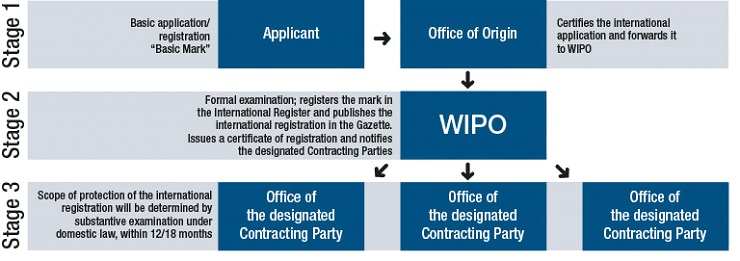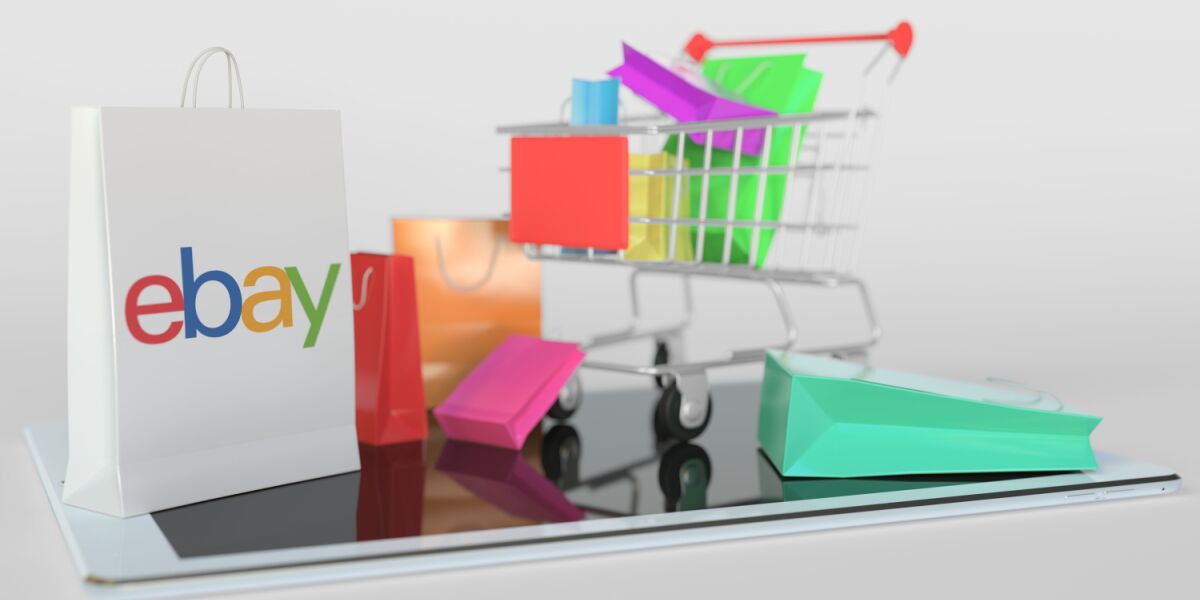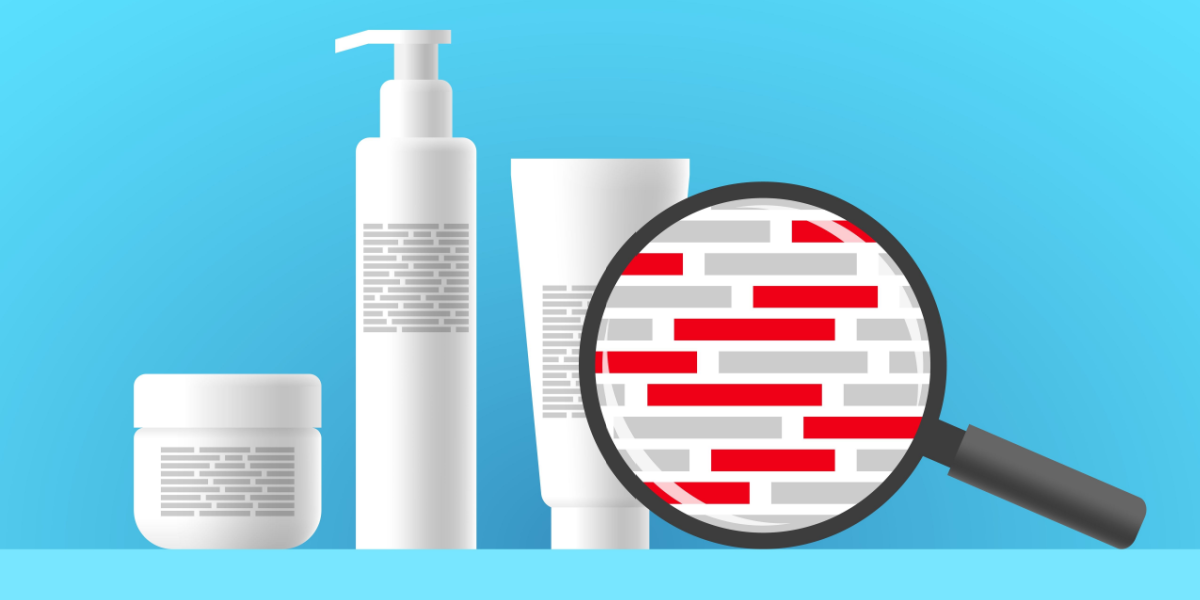You start up an ecommerce store. Then you put in sweat equity and build a strong foundation for your business. Now, your brand and its products have earned a good reputation among consumers.
Then, one day, a loyal customer sends you a friendly heads up. Someone’s ripping you off. They’ve replicated your product, your logo, your company name, and are making sales solely derived from your hard work and creativity.
Could this all have been avoided by trademarking your intellectual property? Yeah, it seems like a huge pain, but maybe it’s worth it. And what does it even involved anyway?
While you can never get rid of copycat competitors completely, trademarks can offer another layer of protection. And in the case of legal disputes, you can show your trademark as proof of your idea and that you came with it first.
Due to their fuzzy nature, and the fast-moving nature of the business, ecommerce entrepreneurs mostly overlook trademarks. However, they are a valuable asset for any business, and their value actually appreciates over time.
If you want to gain a deeper understanding of how to trademark your business name, what other components of your business you can trademark, and much more, then I’ve got you covered today. I reached out to some trademark and business attorneys in the field to answer the pressing questions about trademarks that keep new entrepreneurs up at night.
Before we get started, I have to note that there isn’t any substitute for consulting a legal professional. I’ll show you the basics of how to approach this important intellectual property tool. Still, for specific advice, please get in touch with a legal consultant (we’ll briefly cover how to hire professional attorneys as well).
Let’s begin with the basics of trademarking and then discuss how to trademark a name.
What is a Trademark?
A trademark is anything that helps you identify the source of a product, including a word, name, symbol, design, slogan, device, or any combination of these items. It could be something as simple as your store name, the distinct color of your product, your logo, or even your mascot (if you have one!)
For example, Nike’s famous swoosh appears on all of its footwear and other products. It’s trademarked and was first adopted as the official logo by the brand in 1971. A student created it for $35, attempting to convey “motion in its design.” Since then, as Nike has grown, the logo has accumulated standalone equity and recall value. It’s now become instantly recognizable.
Source: designhill.com
Like Nike, your ecommerce brand can use trademarks to distinguish your offerings from others in the marketplace.
Want to Learn How to Start & Grow a Profitable Online Store in 12 Weeks? Sign Up for Our FREE Masterclass!
Why Does Your Business Need to Trademark?
Occasionally, you might not want to trademark the name/phrase associated with your brand. For instance, Dharmesh Shah (founder of Hubspot) deliberately didn’t trademark the phrase ‘inbound marketing.’ He noticed that the search interest for it spread faster than the brand name:
“We made the deliberate decision not to trademark it or try to “own” the term. We wanted the idea to spread (and the term to be used far and wide). So, in order to foster that, we let others use it as an industry term instead of something HubSpot specific.”
You can read the complete Hubspot story and the importance of such brand-owned terms here.
However, if you’re considering trademarks for your business, here’s why they are a valuable asset and help in growing your business.
1. In the crowded marketplace, trademarks may help your brand image.
David Reischer from Legal Marketing Pages Corp. makes the distinction clearer between a non-trademarked brand vs. a trademarked one. “A non-trademarked name typically has no effect on brand image because consumers are typically unaware whether a brand has a trademark or not. However, a trademark approval at the USPTO does allow a brand to denote a mark is registered by including a capital letter R in a circle near a brand in any advertising materials, and this may connote positively in the mind of the consumer. A brand that is trademarked may be slightly superior in the minds of a consumer, compared to a non-trademarked brand, but the difference is truly marginal.”
2. A trademark makes it easier to take legal action against brands that infringe on your business assets.
While the impact on your brand may be marginal, Reischer points out that that the main benefit of getting trademark protection is the legal benefit of stopping others from infringing on your brand’s property.
Marc Misthal, trademark attorney with Gottlieb, Rackman & Reisman, P.C. agrees. “In my experience, whether a mark is registered or not has nothing to do with how consumers view a brand. It is a question of how interested someone is in protecting one of their key assets. While it is possible to take action against copyists and infringers without a trademark registration, having a U.S. registration makes it easier to take action. A registration provides certain procedural advantages in court, affords nationwide rights, and is often needed to enforce rights on online platforms.”
3. Trademarks can help when you grow or sell your business.
As your business grows and establishes a name in the industry, the value of your trademarks only increases. That intangible value associated with the brand you’ve built up can facilitate a future acquisition by a larger company.
Registering your trademark can also help you expand beyond your core business, and pave the way as you move from one industry into another. David Reischer explains:
A business that acquires a trademark in a category of “goods and services’”at the USPTO will more likely be able to receive additional trademarks in new categories when an “Examining Attorney” at the USPTO reviews the additional applications. A trademark approval in a new category may more easily allow a business to enter a new market where brand recognition is a helpful to acquiring customers in a new market. The trademark registration will prevent other third parties from using a similar mark to compete against the brand in those categories of “goods and services” in which the brand has acquired trademark protection.
Misthal also details how trademarks can help your business expand with more specific examples: “Investors will want to see that a company has taken some steps to protecting that asset if they are going to invest in the company to help it grow into new areas. Further, under trademark law, the test for infringement is whether consumers are likely to be confused by an infringer’s use of a mark.”
For example, if a trademark is registered as an apparel brand, and the infringer is using it for handbags, that would likely be considered too similar to apparel and likely to confuse consumers, since many clothing companies also sell handbags.
On the other hand, Delta Airlines and Delta Faucets can co-exist as trademarks, since the two businesses are so unrelated and it’s pretty unlikely anyone would confuse the planes with bathroom sinks. Trademark law, he adds, typically allows brand owners to prevent others from using protected property in areas of business where the owner might naturally expand.
Now you have the skinny on trademarks and why your business needs them, but since this is a gnarly legal topic that can get a little confusing, let’s answer the most common questions around them.
FAQs Regarding Trademarks and How to Trademark a Name
1. What exactly can you trademark?
While a name is perhaps the most common form of a trademark, there’s quite a range. Trademark anything that’s not descriptive and/or generic. The more unique it is, the more strength it will offer to your brand. You can explore a few examples of the kinds of items you can trademark by a few prominent brands here.
Here’s an example to show you the distinct aspects you can trademark:
Credits: Pearson Education, Inc.
If you’re confused about the business assets you can trademark, here’s advice from Joseph Mandour, a trademark attorney and founder of Mandour & Associates. “The name of the ecommerce store should be trademarked as should any slogan, logo, design, or unique product descriptions. Any words or design unique to the business that can help distinguish the store from its competitors should be protected with a trademark to protect the goodwill of the business.”
2. What is an unregistered trademark?
When you put the trademark symbol (™) on your brand assets, including your graphics, slogan, and name, it acts as an unregistered trademark, meaning it’s not logged with the Patent and Trademark Office. We talk more about this later in the article. Note that other brands can still use the same logo, tagline, and your business name. If you run into a legal dispute with an unregistered trademark entity, you need to otherwise prove that you used it first.
Kelley Keller, Esq. of The Keller Law Firm sharing why using unregistered trademarks is the wise thing to do – “There is no requirement to use the TM or SM symbols and their use has no legal significance, but it is wise to do so. When you use the TM or SM, you notify the public of your claim of branding rights in a particular mark and in turn dissuade others from adopting the same or similar mark for the same or similar products or services. This staves off unwitting trademark infringement, which disrupts the free trade of goods and services in the marketplace.”
3. Why do ecommerce websites need a trademark?
Trademark attorney Marc Misthal breaks down the three simple reasons. “First, a registration is a means of protecting a valuable asset. Second, a registration provides procedural advantages in court. Third, a registration is often needed to enforce rights on online platforms.”
Sean Morrison from Law Offices LLC further observes the special significance of trademarks for ecommerce businesses. “Because of its online nature, ecommerce is especially prone to copying. It’s so easy to simply copy a successful brand or products to move merchandise. Registering your trademark puts the world on notice that you are ready to use legal remedies to shut them down.”
4. Where do you go to trademark a name?
In the United States, USPTO offers you the option to register your trademark at a state level or federal level (to enforce it across the US). However, if you’re outside the US, then you will need to find the local authority that registers and enforces trademarks in your country. You can also file a trademark internationally (we’ll talk about this later in the article).
5. Are trademarks a one-time registration thing?
You can register your trademark once, but it will need to be renewed. David Reischer details the nuances of registration. “In the United States a business files for a trademark registration only a single time at the USPTO but then needs to make an additional filing after 5 years attesting that the mark is still in use and that the mark is ‘incontestable’. Thereafter, a trademark owner needs to file every 10 years to keep their registration active.”
6. Does my business need a trademark registration right away?
Trademarking aspects of your business is not that important in the beginning. Build your business first and get some sales to prove your concept.
Sean Morrison says that registering your mark makes sense only when you’ve built a business. “Registering is an important step. But it’s not the most important. If you’re an established business, and you have not registered, do so right away. But if you’re a startup without a brand recognition or even sales, focus on making a business first. Register within the first year, but don’t spend all your money up front and find out you can’t succeed because you’re out of cash.”
7. Will trademarks help me in any way when selling on Amazon?
Andrei Mincov, the founder of the Trademark Factory®, says, “If you are selling through Amazon, Amazon would only allow registered trademarks to go on their Brand Registry, which adds another layer of protection.”
Further, trademarks can make the process of uploading your products easier on Amazon. Stacy Caprio, an ecommerce POD seller on Amazon, started without a trademark. She had to upload and label every single apparel color and size variation individually through the unintuitive Amazon interface. Then, she discovered Shopify plans that could simplify the process, but it required an official trademark number.
How to Trademark your Ecommerce Business: 5 Simple Steps
Even before you implement the first step below, you can get some protection by using the unregistered trademark symbol, ™. This will offer some protection while the process below unfolds (practically it takes a minimum of eight months and can even take as long as 18+ months as per Jeremy Peter Green).
Next, I recommend exploring official literature related to trademarks. Also, here’s a video by the United States Patent and Trademark Office (USPTO) on an introduction to trademarks for small businesses.
Once you have a bird’s eye view of the whole process, begin with the specific steps below. I’m assuming you’re an Ecommerce business in the US for the steps below, but I offer a few resources for other geographies as well.
Step 1: Check the Eligibility of Your Trademark
To register a trademark, you need to have a distinct entity that represents your brand. You can go through the types of trademarks here.
Here’s a note from James Hsui, business law attorney on the strengths of each type:
Merely descriptive trademarks are those that simply describe the good or service. Suggestive trademarks, like Microsoft, evoke the idea of the good or service. Arbitrary trademarks, like Apple, have no correlation to the goods or services sold. Fanciful trademarks, like Xerox, are essentially made up. Fanciful trademarks have the widest scope of trademark protection, while suggestive trademarks have the narrowest scope. Descriptive trademarks generally cannot be registered.
Generic words and phrases can never be trademarked, because they lack distinctiveness. A descriptive mark might become eligible for registration if you can prove it has “secondary meaning.” Here’s what it means – “Descriptive logos and marks can give trademark protection if they are deemed by the courts to have acquired secondary meaning defined as “a mental recognition in buyers’ and potential buyers’ minds that products connected with the symbol or device emanate from or are associated with the same source.”
Here’s an example of the whole spectrum of protection by the Davis Brown Law firm. It’s best to stay away from generic names, phrases, design, and the like.
Once you have settled on the branding you’re looking to trademark, ensure that you’re not infringing on existing trademarks. Open your country’s intellectual registry and perform a trademark search. Here are a few databases for your convenience.
If you’re in the States, here’s how to conduct a trademark search. Note that occasionally you might arrive at a registered trademark that isn’t in use. In such cases, check if the entity that has filed for the trademark has gone out of business.
In the specific case of trademarking an ecommerce name, design, phrase, and logo, your business is digitally native. That means you need to check domain registrars and social media platforms for the availability of your chosen name and logo as well. While Google will serve most of the above purposes, here are three ways to find out if your logo is unique. You can also use knowem.com for a quick search.
Remember that names are significant for an online business, because of their brand recall value. If your brand is easy to remember, then you stand out and are instantly trusted by consumers. No wonder that Noah Kagan rebranded his business from Sumome.com to Sumo.com shelling out $1.5 million for the domain name.
Once you have done your research and checked for uniqueness as well as the distinctiveness of your trademark, move on to the next step.
Step 2: (Ideally) Hire a Trademark attorney to File Your Request
Once you have a strong application ready, you can file a trademark by yourself here. It’s a cheaper option (about $225) compared with using an online legal service (about $500) or hiring an attorney (up to $2,000). Here’s a cost comparison with a brief analysis of the three routes by Fitsmallbusiness.
However, if your budget allows you to skip the DIY route, then you should focus on doing what you do best, i.e. creating products and scaling your ecommerce business. Hiring legal experts will facilitate the first step and make the whole process of trademarking painless.
Often, you will even find law firms that perform a basic trademark search (through a licensed attorney) for free. After discussing your results, they offer legal advice, provide their service of filing trademarks, and enforce your trademark rights.
While choosing an attorney, look out for relevant industry experience of prosecuting trademark applications. You can refer to the American Bar Association’s Consumers’ Guide to Legal Help.
Step 3: Decide if You Want to File an International Trademark
If you want to limit your trademark to a local market, then you can skip this third step. But if you’re going to register your trademark internationally, then you can directly use the Madrid system for filing your application in more than one country. By paying a one-time fee and submitting a single application in an IP office, you get protection in up to 119 countries. Here’s the 3-step Madrid system registration process by World Intellectual Property Organization (WIPO).
Online services like LegalZoom offer international trademark filing for upwards of $595.
You can read more about the Madrid protocol here. And refer to these official webinars on the system by the World Intellectual Property Organization.
David Reischer recommends filing trademark applications in the geographic area where your business operates. “The importance of filing a trademark in a foreign jurisdiction will mostly depend upon whether a business plans to do business in that foreign territory. All trademarks rights are territorial, which means that they are only granted on a country-by-country basis. A company that is established in the United States might want to file trademarks in a foreign country if that territory will be an important location for future international business expansion strategy. The most important foreign jurisdictions for a business to target filing a trademark are obviously those that are or will be commercially significant for the company. Factors that a company should consider when deciding to file for a trademark in a foreign jurisdiction include 1) revenue size of that foreign market 2) whether there are already existing operations in a foreign country 3) anticipated future expansion plans into a foreign market or 4) simply a defensive registration to prevent a competitor from obtaining rights for a similar mark in a foreign jurisdiction.”
Step 4: Quickly Respond to ‘Office Actions’
Once your application is submitted, it’s evaluated by a USPTO examining attorney. If there are any problems, you will receive a letter called an “office action” that explains the issues encountered in enforcing your trademarks. Generally, the reasons for office action are the following:
- USPTO found that your trademark is too similar to an existing trademark, or you’re trying to trademark a descriptive/generic entity.
- You didn’t submit a proper specimen of your trademark.
Sending a strong application without these mistakes is ideal. However, in the case that you encounter an office action, you are given an opportunity to address the issues within a stipulated deadline of six months before your application gets abandoned. That means you need to respond to the objections raised in the office action letter thoroughly. You can refer to this article for help with tackling office action.
Finally, your mark is published in the Official Gazette, a weekly publication of the USPTO. If any party finds they are getting damaged by the mark, then they can again file a request in opposition to your registration. In such cases, the legal help you hired in Step 2 will help!
Step 5: Stay Vigilant and Protect Your Trademark
While the USPTO will register your mark, you need to enforce it. Start with using the registered trademark symbol ®. Also, ensure other parties do not infringe your mark. Here’s what it’s all about, according to USPTO:
“Trademark infringement is the unauthorized use of a trademark or service mark on or in connection with goods and/or services in a manner that is likely to cause confusion, deception, or mistake about the source of the goods and/or services.”
“Reproduction, counterfeiting, or imitating a registered mark in an attempt to sell or advertise goods or services that are likely to cause confusion or deceive without the consent of the trademark holder.”
Infringement by others leads to dilution and destroys the sweat equity you have put into building your brand. If you find an infringer, then you can start by sending them a “cease and desist letter.” However, you might need to hire legal help for challenging the unauthorized use by filing a lawsuit.
Want to Learn How to Start & Grow a Profitable Online Store in 12 Weeks? Sign Up for Our FREE Masterclass!
Go Trademark Your Brand Now!
Mercedes registered as a brand name in 1902. As their business grew, the name has become synonymous with luxury. If you want to differentiate your ecommerce business from competitors, then trademarking is a great identity communication tool. It can convey the emotional and intellectual attributes of your brand.
As you begin building a brand, it’s critical to ensure you’re not infringing on the rights of an existing entity. I have shown you the five steps to trademark your brand in the article, but I highly recommend seeking out legal help to ensure a hassle-free process. Please note that this article is not a replacement for legal advice. We recommend you consult with a legal professional if you have any specific questions about the legal aspects of the trademark process.
What’s your experience with trademarks? Share them in the comments below.


